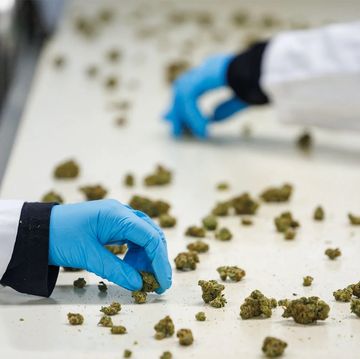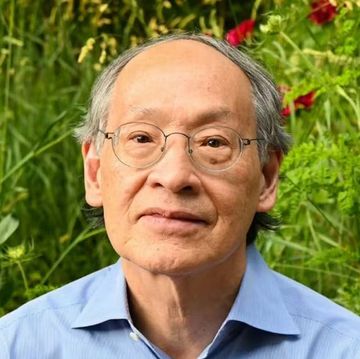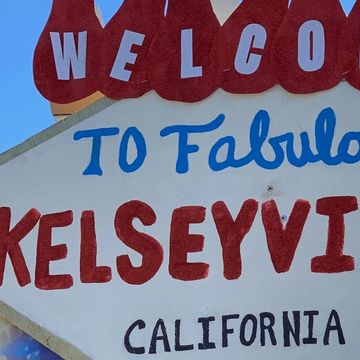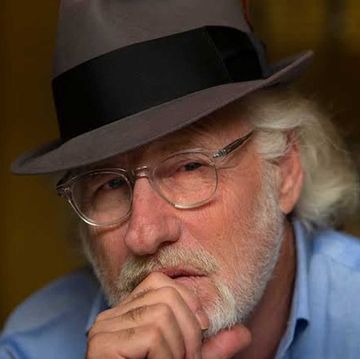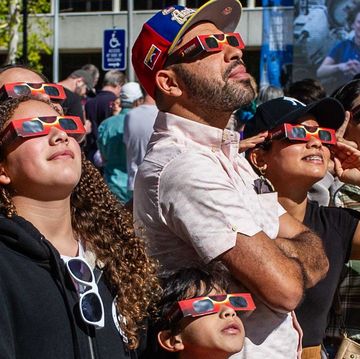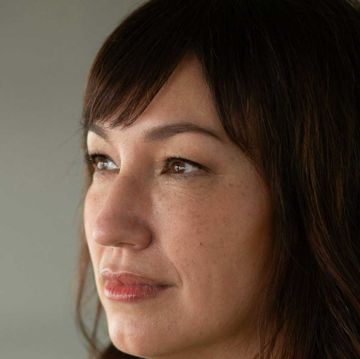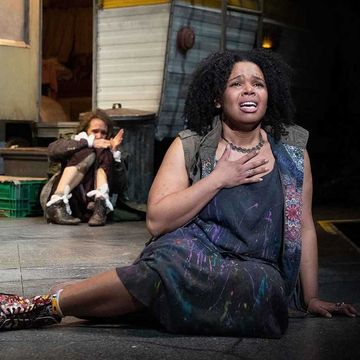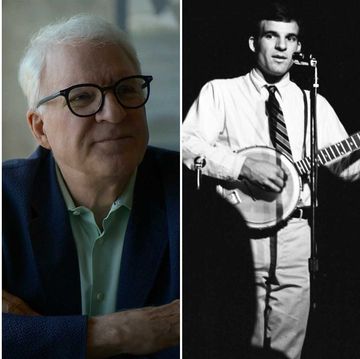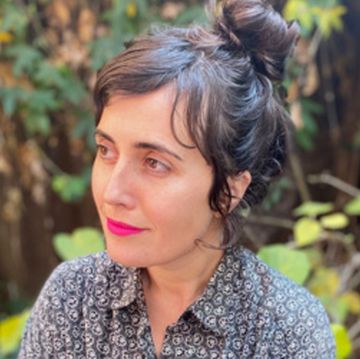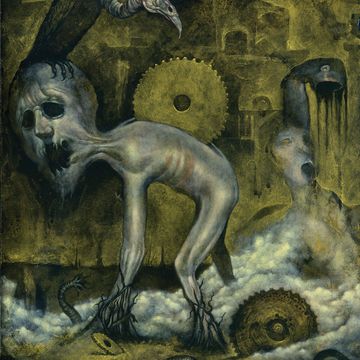Oh my god, oh my god, oh my god,” said Leslie Halfmoon as she moved her flashlight across a series of dusty Polaroids. She and several other citizens of the Caddo Nation were rummaging through an abandoned portion of McKee’s Indian Store, in Anadarko, Oklahoma, shortly after their tribe acquired it in March 2023. The electricity had been turned off long ago. Halfmoon and the others were surrounded by piles of old boxes, broken furniture, and vintage electronics. Yet Halfmoon knew at once what they had found. She was gazing upon the illuminated faces of six of the founding figures of Oklahoma Indian art: Comanche painters Rance Hood, Doc Tate Nevaquaya, and George “Woogie” Watchetaker; Kiowa-Comanche painter Blackbear Bosin; Kiowa painter Stephen Mopope; and Cheyenne painter Archie Blackowl. Taken in the late 1960s or early ’70s, the Polaroids capture the artists during the prime of their careers, in vigorous health, between the ages of 30 and 50. One exception: Hood looks like a teenager.
McKee’s was established in 1962, and attached to it was the Susan Peters Gallery, once a celebrated center for Indian art and Indian art supplies. Halfmoon serves as the marketing and media director for the Caddo Nation of Oklahoma, and she and the others had been eager to explore the defunct space. In addition to the photos, they found several paintings by Blackowl as well as prints by T.C. Cannon, a Kiowa-Caddo artist. Halfmoon recalls being surprised by the rugged good looks of the painters in the photos: “I was like, Doc Tate! Hubba-hubba!”
The Caddo Nation, a tribe of approximately 7,000 enrolled citizens, intends to do something novel with McKee’s. Instead of investing in a casino, as many other tribes in Oklahoma have done, they’ve already reopened the gallery and plan to resurrect the building as a destination for Indigenous art and culture. “We have a couple of gas stations; this store is the biggest [investment]; this is what’s important to us,” Halfmoon says.
BRUSHWORK AND PAINT
I remember going to McKee’s with my dad, Comanche artist Hollis Asenap. Actually, I barely remember going there—it had to be the early ’80s, and I would have been a very young boy.
“There was a championship [powwow] war-dance buckle, and I really wanted it, but I didn’t have no money,” my dad tells me, chuckling over his fond memories of the store. “Just amazing stuff there that you wouldn’t find anywhere else.”
I remember that the store glowed orange with fluorescent light and was filled from top to bottom with Indian art and crafts: paintings hung on the walls; beadwork and jewelry were stored in glass cases. Old Indian stores like this were, and still are, some of my father’s favorite places to visit.
“I would have bought the place out had I had the money,” he tells me over the telephone. I’m in Albuquerque, New Mexico, and I can practically hear him smiling on the other end from Anadarko, where he heads up the Kiowa Tribe’s new business, Indian City Screen Printing. He’s training a new generation of Kiowas in the art of screen printing and design.
My dad looks at the images I texted him of the Polaroids of his old friends, and he chuckles again. He came to know these artists later, after the photos were taken. “I started seeing them more and more and became friends with them,” he says. Hood and Nevaquaya could be spotted in Anadarko selling work and hanging out at the local bar. “Dad used to drink with Rance.” Hood isn’t that much older than my dad, so it’s hard to visualize him as a young man drinking beer with my grandpa at the bar. “Rance was crazy and wild and liked to fight. Doc wasn’t like that—he was older,” my dad says. I wonder whether my grandfather helped keep Hood out of trouble but then remember that my grandfather was pretty wild himself. He probably got along well with Hood.
It was hard to sell Indian art in Oklahoma in the ’70s and ’80s. My dad remembers these outsider Indian artists with little to no training but with lots of raw talent, practicing their craft: “There was no help. They were just on their own. Doc used to use his drugstore tempera, and Rance would just use anything—whatever they could find to paint with. And brushes, they had really bad brushes. Their paints were not very good. They was just self-taught; nobody told them about how to use good brushes and ink and stuff.”
My dad had studied art at Oklahoma State Tech in Okmulgee and had learned the importance of having the proper tools: “The best paint was Winsor & Newton, and it was made to dry flat, which was perfect for Indian art. And the brushes, they made the best brushes in the world.”
Dad tried his best to introduce the idea of better supplies to his fellow Comanche painters, but to no avail. “It was just foreign to them,” he says. “They didn’t know what I was talking about. If they could just use better paint and better brushes, you know that would really improve their work.”
After many attempts to try to wean these artists off their cheap materials, my dad took matters into his own hands: “I gave up. I said, I’m just going to have to buy them a set. And I did. I bought all of them a set [of Winsor & Newton paints] and brushes, too, to show them this is what you should be using.” In particular, he purchased materials for Hood, Nevaquaya, and Watchetaker. It was just the thing they needed to advance their work. “The paintings that came out of that process is some of the best work that Woogie did. He made prints of eagle dancers, and Rance’s work just took off, and Doc’s too. Doc started selling his work for $1,000,” a large sum at that time for Indian art in Oklahoma.
DESTINATION FOR ART
“A place like Anadarko in the 1960s and 1970s became one of the larger markets for Native art. Oklahoma has always been the second-largest market for Native art, second only behind Santa Fe, and McKee’s is one of those North Stars in that constellation,” says Scott W. Hale of SouthWest Art Appraisals, who has been working with Native art for more than 25 years in Santa Fe and Oklahoma City. Hale is the one who sent me—via text—my first glimpse of the artists’ Polaroids. He wrote that I bore an eerie resemblance to Bosin (it’s probably the glasses).
This article appears in Issue 26 of Alta Journal.
SUBSCRIBE
“The portraits represent a snapshot of a particular place in a particular time of these noteworthy individuals,” says Hale. “Today, we are seeing a resurgence of the historic Native painting market, and the values on these artists’ works are really starting to climb. I can remember when you couldn’t get $5,000 for an Archie Blackowl, and I’ve now seen them sell for $15,000. A really great Doc Tate today will cost you five figures.” Watchetaker, in addition to painting, performed dances and cultural presentations and as a result did not paint as much. Because he was not as prolific as Nevaquaya, his paintings actually sell for more, no less than $25,000, according to Hale.
Hood’s work became heavily influenced by the Native American Church and the visions that came from it, peyote visions. “Doc’s style and Woogie’s style definitely comes out of the Bacone [College] and OU [University of Oklahoma] and Santa Fe Indian School Studio tradition. Rance’s really began to incorporate much more,” Hale says, “but it becomes much more designy.” Hale sees graphic design and 1960s psychedelic poster art as being hugely influential on Hood during his peak years. “That renaissance in terms of Southern Plains Indian painting in the 1960s and ’70s is directly correlated to the rise of Native American Church.”
Looking back, there was a connection between the prevalent psychedelia of the period and Native art that incorporated peyote accoutrement, it being a substance that hippies sought out. “There’s just this great big cultural stew,” Hale explains. “What’s a stew? You take all these different types of meat and vegetables and spices and mix them all together and make something really tasty. In a lot of ways, that was Anadarko in the 1970s, and McKee’s was the prismatic reflection of that.”
END OF A GENERATION
“McKee’s was something special in Anadarko,” my father says. “I thought that would be a neat place to live, with Indians and Kiowas, and be right there in the middle of it.”
My dad got his wish: at the age of 75, he now spends his weekdays in Anadarko, living in an RV beside the screen print shop he runs, returning home on weekends to my mom in Grand Prairie, Texas. He draws inspiration from the town and its famous store: “Right now, people just walk into [McKee’s] with beadwork, amazing work.” My father was talented enough to sell one of his own paintings to McKee’s, but he wasn’t the one to sell it. His sister sold it for burial funds after their mother died; the Comanche tribe eventually bought it for the Comanche Museum and Cultural Center in Lawton, Oklahoma.
“I had some Rance Hoods and Docs, and I sold them,” my dad says. “I needed the money, so I’d buy it and resell it. I wish I had the paintings back. Before Rance had his stroke, he gave me one of his paintings of a hand game that’s in his book.” He reflects that maybe Hood knew he was in his last days of painting. Dad tried to pick him up for a last adventure a few years back, but Hood couldn’t go. “I’d call him, and he would say, ‘I can’t, I can’t just get up and go.’ ” Hood is now in his 80s and lives in a nursing home in Snyder, Oklahoma.
My dad is one of the last of his generation of Comanche painters to keep producing work. He still paints and continues to look out for great Indian art from Anadarko to add to his collection. He can afford to keep it now. “I just met a guy who does feather work with real eagle feathers.… I saw a woman today—she’s kinda homeless, living with her daughter. She does great bolo ties, beautiful work,” he says. I hope he buys one of her ties.•
Jason Asenap is a Comanche and Muscogee Creek writer, critic, and filmmaker based in Albuquerque, New Mexico.







